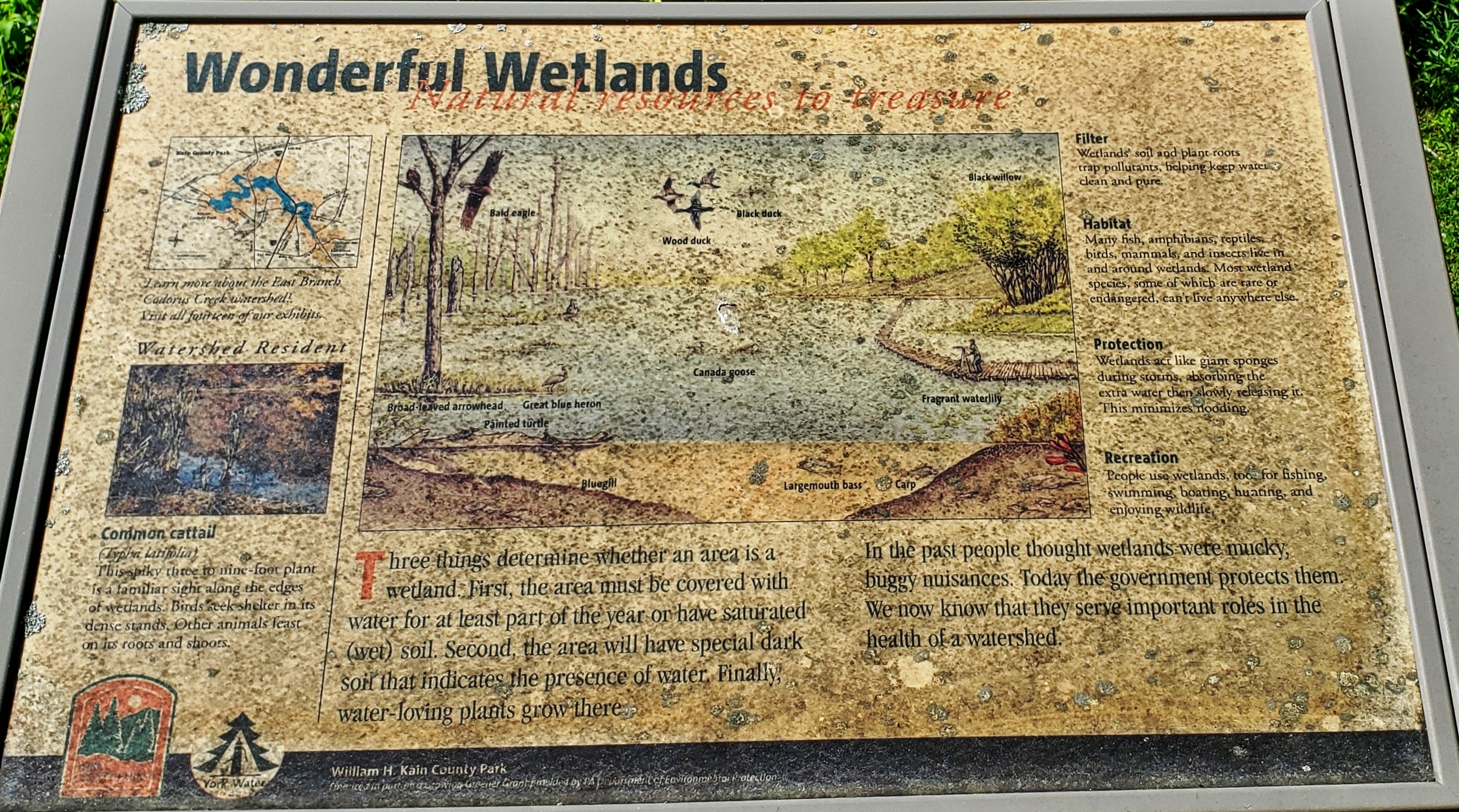Photograph as originally submitted to
this page in the Historical Marker Database
www.HMdb.org.
Click on photo to resize in browser. Scroll down to see metadata.
Photographer: Cosmos Mariner
Taken: June 23, 2019
Caption:
Wonderful Wetlands • Natural Resources to Treasure
(located just left of marker) | Additional Description: Three things determine whether an area is a wetland. First, the area must be covered with water for at least part of the year or have saturated (wet) soil. Second, the area will have special dark soil that indicates the presence of water. Finally, water-loving plants grow there.
In the past people thought wetlands were mucky, buggy nuisances. Today the government protects them. We now know that they serve important roles in the health of a watershed.
Common cattail • Watershed Resident(
Typha latifolia) This spiky three to nine-foot plant is a familiar sight along the edges of wetlands. Birds seek shelter in its dense stands. Other animals feast on its roots and shoots.
FilterWetlands’ soil and plant roots trap pollutants, helping keep water clean and pure.
HabitatMany fish, amphibians, reptiles, birds, mammals, and insects live in and around wetlands. Most wetland species, some of which are rare or endangered, can’t live anywhere else.
ProtectionWetlands act like giant sponges during storms, absorbing the extra water then slowly releasing it. This minimizes flooding.
RecreationPeople use wetlands, too, for fishing, swimming, boating, hunting, and enjoying wildlife.
Submitted: November 25, 2019, by Cosmos Mariner of Cape Canaveral, Florida.
Database Locator Identification Number: p503539
File Size: 2.141 Megabytes
To see the metadata that may be embedded in this photo, sign in and then return to this page.
